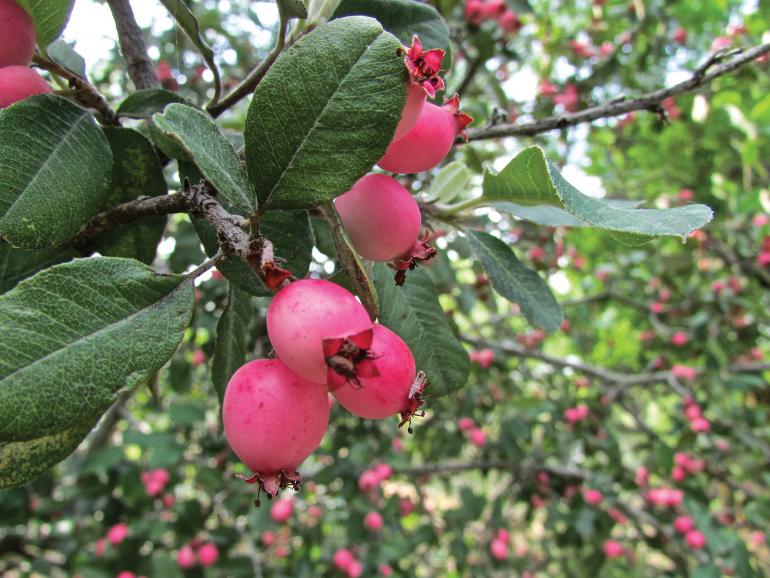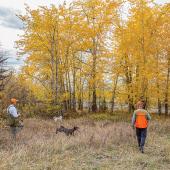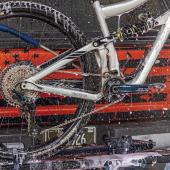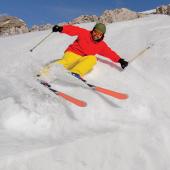Hunger Games
A guide to edible & inedible plants.
“Earth was not built for six billion people all running around and being passionate about things. The world was built for about two million people foraging for roots and grubs.” —Douglas Coupland
Whether summiting high mountain peaks, biking rolling hills, hiking through open prairies, or meandering riverbanks, this region offers an abundance of plant life. The wild bounty contains many edible, human-safe plants, but be wary—there are also some that can lead to an upset stomach or fatality. Beyond the usual huckleberries and wild strawberries, here are a few of the many other edible plants in southwest Montana, and a couple to avoid as well.
Guidebooks
- Foraging the Mountain West, Thomas J. Elpel & Kris Reed
- Edible Native Plants of the Rocky Mountains, H.D. Harrington
- Botany in a Day: The Patterns Method of Plant Identification, Thomas J. Elpel
- Cutting tools (high-quality scissors & pocketknife)
- Digging trowel
- Basket or mesh bag
- Experienced fellow forager
Edible Plants
Chokecherry
Appearance: Light brown to dark reddish-brown
Edible portions: Entire berry, but avoid consuming an excess of seeds
Flavor: Bitter, from cyanide in seeds
Location: Along streams
Serviceberry (Saskatoon Berry)
Appearance: Shrubby plant; small, oval leaves; berry purple or red in color
Edible portions: Entire berry
Flavor: Sweet and nutty
Location: Along bodies of water, grasslands, spacious woods
Cattail
Appearance: Long, slender stalks; flat leaves
Edible portions: Roots, stalks, and flower
Flavor: Bland, starchy
Location: Swamps, murky water; along edges of slow-moving streams
Harvest: Find green stalks, grab at base and yank the plant up
Wild Asparagus
Appearance: Identical to cultivated asparagus; tall flower stalks
Edible portions: Entire plant
Flavor: Nutty, semi-bitter
Location: In moist soil along irrigation ditches, roadside fences
Harvest: Break near base; leave at least one spear to spread seeds
Goosefoot (Lamb’s Quarters)
Appearance: Shaped like a goose’s foot, coat of waxy powder across leaves
Edible portions: Leaves and stalks
Flavor: Similar to spinach
Location: Colonized places like barnyards, gardens, construction sites
Harvest: Clip stems
Inedible Plants (these will kill you)
Poison Hemlock
Appearance: Ferny leaf, purple spots on stem; white flowers in umbrella-shaped clusters
Location: Open sunny areas, low elevations, bordering pastures
Result: Neuroparalysis, respiratory failure; possible death
Water Hemlock
Appearance: Cluster of white flowers (umbrella-shaped); veins in serrated leaves lead to the cut of the serration (A vein to the tip, totally hip. Vein to the cut, pain in your gut.)
Location: Wet meadows, marshes, streams
Result: Convulsions, vomiting, respiratory failure; possible death
Death Camas
Appearance: Lily-like flowers (creamy or greenish-white); bulbs grow in overlapping layers, like an onion; parallel-veined leaves
Location: foothills, meadows
Result: Muscular weakness, tremors, incoordination; possible death
Harvesting Ethics
Foraging for edible plants requires knowledge of the natural world, and also respect. Like anything, only take what you need, and ensure that you leave enough to propagate future generations of plants. Familiarize yourself with invasive species and be aware of what seeds you may be spreading while on a harvesting excursion. Also keep in mind that certain root crops can take years to regrow. Harvest at the base of the plant instead of uprooting it completely (with the exception of cattails). Finally, rotate areas you harvest from so as not to deplete one site.
Dos and Don’ts
DO: Get to know poisonous plants first, especially look-alikes and plants that have both edible and poisonous features (e.g., edible berry, poisonous leaves).
DON’T: Study only edible plants and consume them, ignorant of their poisonous twins.
DO: Learn various plant families and recognize plant patterns.
DON’T: Assume knowing the name will reveal all details about a plant.
DO: Study plants from the field in multiple field guides, and examine minute details.
DON’T: Jump from reading one O/B article or guidebook to full-on foraging.
Pro Tip
by naturalist Thomas J. Elpel
We are aliens. The process of foraging is essential to becoming native to this place. Get to know plants on an intimate level—their tastes, textures, properties. You are at home wherever you are if you connect to the natural world.













